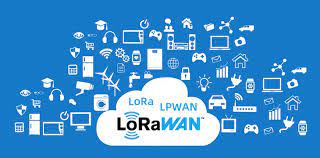IoT-specific protocols are designed to meet the unique requirements of IoT applications, such as long-range connectivity, low power consumption, and scalability. Here are some popular IoT-specific protocols:
- LoRaWAN (Long Range Wide Area Network): LoRaWAN is a low-power, long-range wireless communication protocol. It enables devices to communicate over long distances, typically several kilometers, while consuming minimal power. LoRaWAN operates in unlicensed frequency bands, which allows for easy deployment without requiring costly infrastructure. It is commonly used in applications like smart cities, agriculture, asset tracking, and industrial monitoring.
- NB-IoT (Narrowband IoT): NB-IoT is a cellular communication standard designed specifically for IoT devices. It operates in licensed cellular spectrum, providing wide-area coverage, deep building penetration, and long battery life. NB-IoT offers low data rates but is highly scalable and suitable for applications that require reliable connectivity across large geographical areas, such as utility monitoring, smart metering, and logistics.
- Sigfox: Sigfox is a global, low-power, wide-area network (LPWAN) technology designed for IoT applications. It operates in the unlicensed ISM bands and provides long-range connectivity with low energy consumption. Sigfox is known for its simplicity, cost-effectiveness, and scalability. It is often used in applications that require low data rates, such as asset tracking, environmental monitoring, and smart agriculture.
- Weightless: Weightless is an open standard LPWAN technology designed for IoT communications. It operates in sub-GHz frequencies and supports long-range connectivity with low power consumption. Weightless is suitable for applications that require wide-area coverage and efficient data transmission, such as smart cities, industrial automation, and smart metering.
- Thread: Thread is a low-power, wireless networking protocol specifically designed for smart home applications. It provides reliable and secure communication between various IoT devices within a home network. Thread uses IPv6 addressing and operates on the IEEE 802.15.4 standard. It enables seamless connectivity and interoperability among different devices, such as smart thermostats, lighting controls, and security systems.
- AllJoyn: AllJoyn is an open-source software framework that enables interoperability among IoT devices and applications. It provides a common language for devices to discover, connect, and communicate with each other regardless of the underlying communication technology. AllJoyn supports a wide range of platforms and operating systems, facilitating seamless integration of IoT devices and services.
These IoT-specific protocols cater to specific connectivity requirements of IoT applications, such as long-range coverage, low power consumption, scalability, and interoperability. The choice of protocol depends on factors like range, power constraints, data rate, network infrastructure, and the specific needs of the IoT deployment.
SHARE
